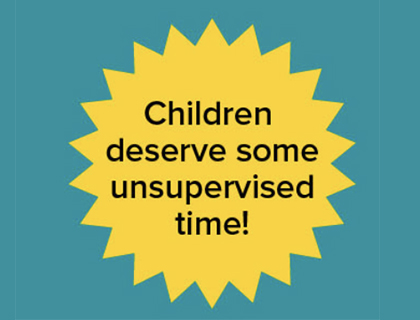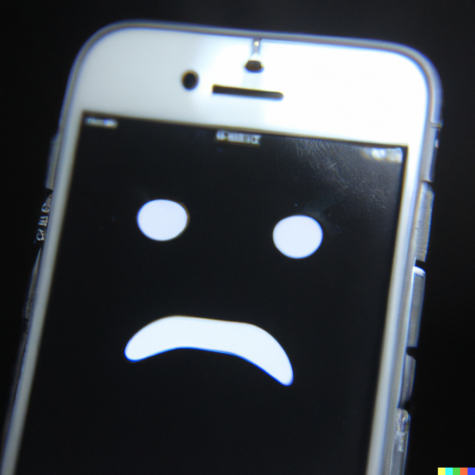Try not to start shaking. May 1-7 is SCREEN-FREE WEEK! I caught up with Jen Kane, Screen-Free week’s coordinator. Jen spent the first half of her career in tech, and still sees its promise, not just its peril:
Our interview has been edited for length and clarity.
I Screen, You Screen, We All Screen.
LS: When did Screen-Free Week begin?
JK: It’s been around since it was “Turn off your TV.”
LS: “No Ed Sullivan this week, kids!”
JK: But now, coming out of the pandemic, some people say, “Oh, I can’t go screen free!”
LS: I may be one of those people. So Screen-Free week is for us adults, too? Not just kids?
JK: What we’re talking about is a week to set whatever goal you have for screens. Maybe it’s, “We can go a week without screens at the dinner table.” Or, “I will give up TikTok.” Or SnapChat. Just some boundaries. There are a lot of different ways, positive and negative, screen habits can bleed into your life.
Screens aren’t all bad.
LS: What are some positive ones?
JK: An easy one is physical health. I have some medical concerns so I have used meditation apps. Then again, I have a teenager who spends her time all crunched up staring at a screen. So there’s a middle ground. Turn up the volume on the things that are working, turn down the things causing harm, and carve out space for offline time.
LS: What do people start doing differently when they go Screen-Free – or Screen-A-Little-Less?
JK: We’re hearing that siblings are getting along better, and doing things they haven’t done for a while, like crafts. But really, it’s more about: Is there something that was a negative about screen time that we didn’t see till we took it out?
LS: Like what?
JK: One time I was waiting for a friend at the mall and I looked down and I was on Facebook. It happened on autopilot. I wasn’t even thinking – I was just using my downtime for that. So this is a chance to step back and say: “This is taking a lot of space in my life and what am I getting in return?’”
Why it’s so hard to quit, even for a week.
LS: Something to do while you wait for a friend?
JK: We’ve gotten trained into using our devices anytime we feel bored. This is by design. Someone in Silicon Valley got paid to make sure you answer that text while you’re driving that car, or spend another hour on that level of the game. So it’s unfair to blame society for not having the “will” to put down something. There’s a whole industry whose job is to make you stick around.
LS: Stick we do.
JK: But you don’t get any real value. You can spend hours on Instagram or binge a show and afterwards you realize, “Wow! I have to make dinner!” You’re almost coming back from an alternate reality. But it’s not like coming back from a good workout, or time in nature, or time with friends.
LS: All true. But if we adults are spending so much time online, it can feel a little hypocritical to say, “Cut that out, kids!”
JK: We can’t fault parents or kids for having a hard time controlling their screen time. So carving out a window of time – that should be part of [everyone’s] agenda.
The screen-free tips we all need!
LS: Any suggestions about how to do this? I need them!
JK: One thing is to write a Post-It note of interruption activities.
LS: Which are…?
JK: When you’re about to automatically look at your phone, something you can do instead: Do five jumping jacks. Drink a glass of water. Pet your dog.
LS: Oh – interrupt the habit of reaching for a screen.
JK: I know how very hard it is. I’ve worked with my daughter.
The screen-free tips kids especially need!
LS: What worked best for her?
JK: Petting the dog. You have to write it down ahead of time, otherwise you will pick up your device.
Another tip – also sounds silly – is to practice communicating with people who are interacting with their screens instead of you. So if I’m having lunch with you and you keep looking at screen, I can say, “You know, I have that app, too. Do you like it? Tell me about it.” Or if you’re at an event, “I don’t really know anybody else here, so can I talk to you?”
LS: Direct folks back to the real world. I like that. What, specifically, can kids do?
JK: If they go to a party or playdate and everyone’s on their phones playing MineCraft, you have to teach your kids how to interrupt, too. “Hey guys, can we do such-and-such instead?” Practicing it helps.
Yet MORE screen-free tips!
LS: More tips please!
JK: Turn off notiffications.
And the biggest one is: get the phone out of the bedroom.
LS: And what about not giving kids phones until they’re 13 or 16 or 35…
JK: A lot of parents say they got their kids phones in 5th grade because they need to be able to reach them. I tell the parents: Buy them a dumb phone if all they need to do is call or text you.
LS: Great! And perhaps you have something else to suggest?
JK: Yes: Intentionally program the tone of what you’re going to consume.
And make your actual screen time less depressing.
LS: How?
JK: Follow content sources that are positive and silence the negative ones. This trains the algorithm to give you more happiness. If I spend a month consistently clicking more on “Man saves puppy in river” than “Man throws puppy in river” –
LS: You’ll start getting more “Man saves puppy” stories?
JK: Yes. Most people don’t realize they have that power. I like to fool the machines. And we have to teach our kids how to fool the machines, too.
To participate in Screen-Free Week, May 1-7, visit screenfree.org/pledge




1 Comment
For those of you who find that screens seem impossible to give up, there is Media Addicts Anonymous. There is help. http://www.mediaaddictsanonymous.org